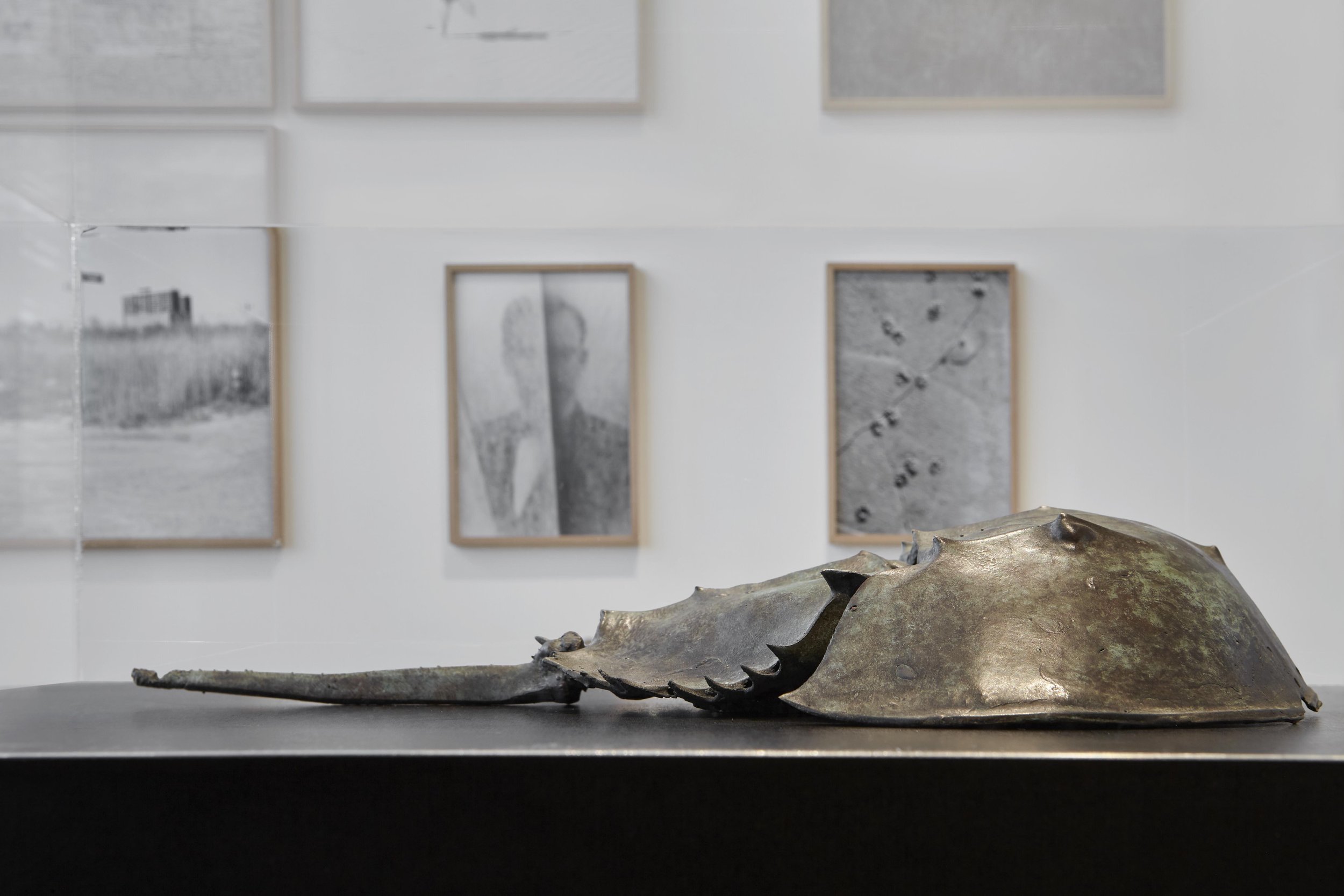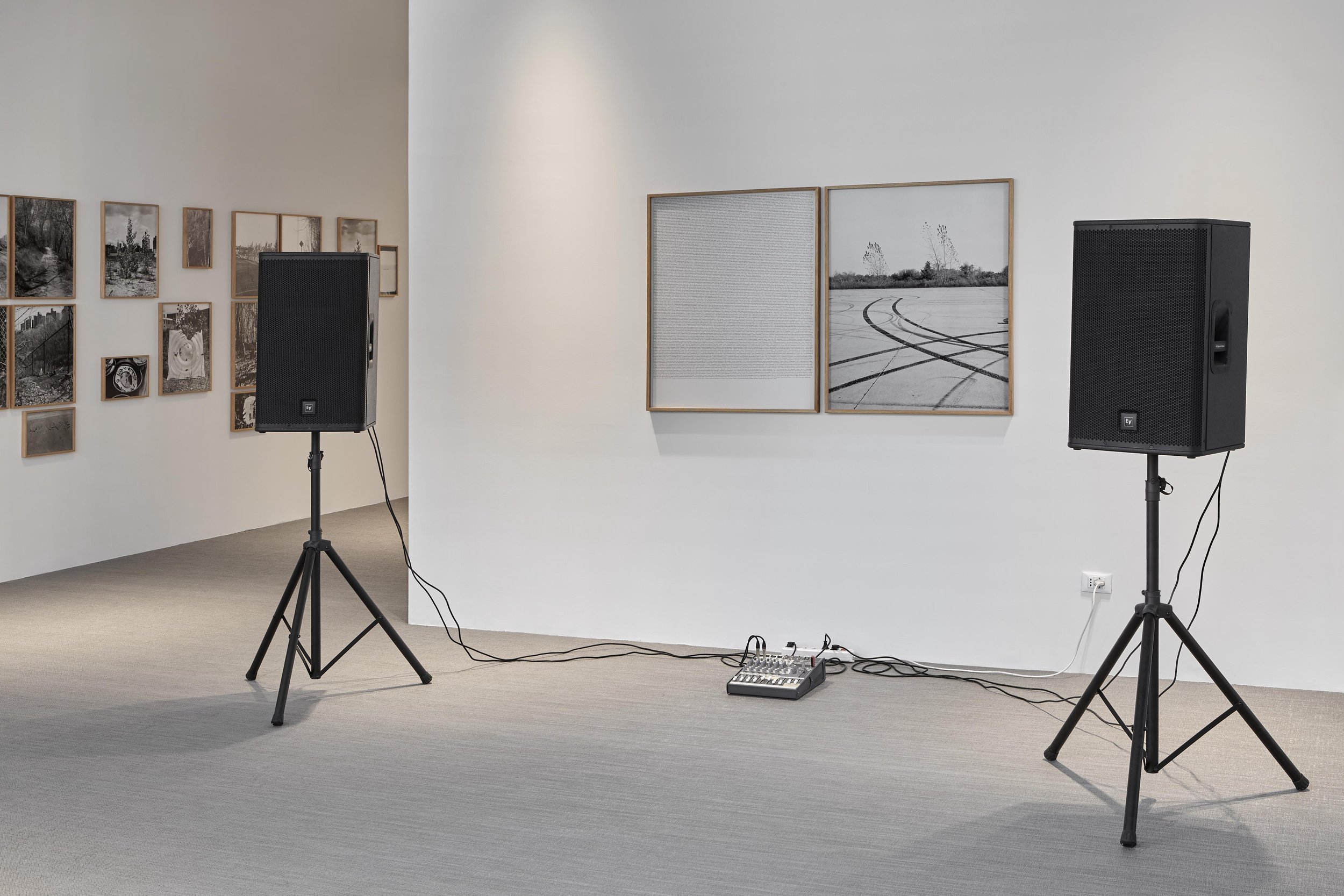END. WORDS FROM THE MARGINS, NEW YORK CITY 2023
A Kind of Eternity
During the spring of 2016, I decided to walk along all the borders of New York City. Sometimes I would go around on foot. Other times, on my bicycle, I would reach the end of the subway line, chain my bike to a post and start walking. I would carry a rucksack with me for my cameras, a Zoom sound recorder, a notebook and pen, lots of HP5 400 medium format black-and-white lm rolls, a map, water flask, some energy bars, and an apple. I plowed the edges of the ve boroughs of the city which, in all their diversity, make up the overall image of New York. I walked and photographed my way around its perimeters because I wanted to see the most hidden areas with my own eyes: green areas often surrounded by metal fencing and where it is still possible to carve out a corner of silence in which to reflect on the sense of a distance.
The fencing that surrounds the city often made it impossible for my body and even my gaze to go beyond, and I would remain this side, trying to sidestep the bionic eyes of CCTV cameras and the signs inviting me to Keep Out. If I found a gap in the netting, often not without feeling rather
ill at ease, I would squeeze my way through to the other side. I would frequently come to the end of a street and nd myself faced with a yellow sign with the word End. The end of those streets marked the border between the concrete of the city and the green areas, the polluted canals, the lagoons, and the ocean beaches.
Most of the time I took photographs in a state of almost unreal peace and silence, in those places where the thick concrete jungle suddenly thins out and nature takes over once more; the water nds beaches on which to deposit its debris, and the ear nds the ideal dimension to listen to the sound of the city, both near and far at the same time. In these areas of spontaneous vegetation, Canada geese lay their eggs and primeval, armored Atlantic horseshoe crabs wash up onto the sand, reminding us that New York might just be a ghost town emerging from the abyss of millions of years ago, or might be destined to suddenly plunge back into the gray ocean waters.
I left out lots of photographs. Although not visible, those missing bear the same weight—both geographic and affective—of all the others to be found in this show, for they punctuated my journey along the perimeter of the city, marking the rhythm of my days through the various seasons just as much as the others did. I metabolized this project—and the book The Sound of the Woodpecker Bill: New York City—during the winter of 2018 and spring 2019 in my studio in via Padova, Milan, the map of the city always open on my desk, covered in red, yellow, and blue dots,
which had accumulated over the course of my walks. Those colors stood for points of the city which had had a particular signi cance for me.
The photographs I chose to tell the story of this walk spent a long time lying on the floor of
my studio in Milan, being mixed together in the continuous reinterpretation of a distance. This exhibition not only tells the story of the edges of the city that I traced on foot between 2016 and 2018, but also the numerous periods in which I went back to Italy and thought over my journey, traipsing around the perimeter of my studio. I see the geography of places as an elastic image that may be lengthened and shortened as our mood would have it. Narrating through images is, above all, a way to imagine another possible world, and walking around the edges of New York was also a way of imagining another city.
Antonio Rovaldi
On the margins
The edges of the city, in this case of a metropolis, represent an ambiguous boundary. In some cases, it is one marked by clear physical boundaries—a wall, a net, a canal, or the sea—while in others, the transition is less sharply de ned. It is not clear when the city ends and something else begins that is dif cult even to de ne. Nature? Is there really still an ideal entity that we can call by such a name? The signs of direct or indirect anthropisation—the change in climate, the spread of animal and plant species, the perception of light and sound—now pervade every corner, yet
at the same time archaic forms of life remain, mingling with the remnants of our own time. The boundaries of the city—in this case those of New York, but they could be those of any other urban settlement, even Milan—exalt the profound signi cance of this ambiguity, catalyzing various methods of representation, from urban geography to photography and sound narrative, and as in this case, to cinema. The artistic research allows us to grasp a degree of complexity which would otherwise be dif cult to narrate.
Roberto Dulio







